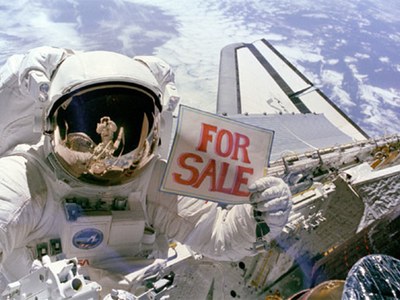America’s unknown astronautsby Anthony Young
|
| Over such a long span of time, it is easy to forget the many milestones set by the astronauts of NASA’s human spaceflight program who flew aboard the shuttle. |
Because they were the first astronauts to pilot the shuttle, their names are easy to remember. However, since that first launch, there have been hundreds of astronauts launched aboard the shuttle over the last three decades. They do not share the same name recognition as, say, the Apollo astronauts who were so few in number and their missions to the Moon so historic and dramatic. What is significant is that the shuttle program employed international crews and, unlike Apollo, many women.
Over such a long span of time, it is easy to forget the many milestones set by the astronauts of NASA’s human spaceflight program who flew aboard the shuttle. Flights became almost routine and often overlooked—until the Challenger disaster of January 28, 1986. However, the shuttle program is one of great success and its sometimes forgotten astronauts can take much of the credit. Who were some of these astronauts?
Sally Ride was the first female United States astronaut to ride into space. She flew aboard STS-7, launched on June 18, 1983. She also flew on STS-41G, the 13th flight of the shuttle, in 1984. The first female astronaut to perform a spacewalk was Kathryn D. Sullivan on October 11, 1984, during the flight of STS-41G; this marked another milestone: the first female astronaut (Sally Ride) observed another female astronaut (Sullivan) perform her first spacewalk.
The shuttle program has been about getting payloads into low Earth orbit. Among the most famous payloads during the shuttle’s first decade was the Hubble Space Telescope. It was carried into orbit by the shuttle Discovery, launched on April 24, 1990. The crew of Commander Loren J. Shriver, Pilot Charles F. Bolden—NASA’s current Administrator—and three mission specialists, Steven A. Hawley, Bruce McCandless, and Kathryn Sullivan all shared in the successful deployment of the HST, which continues to collect stunning images of the cosmos.
Shuttle crews have also been involved in retrieving orbiting payloads—primarily satellites—to return them to Earth. STS-51A was launched on November 8, 1984, with the crew of Commander Frederick Hauck, Pilot David Walker, and Mission Specialists Anna Fisher, Dale Gardner, and Joseph P. Allen. Their mission was to deploy the Canadian Anik D2 and Leasat 1 and later retrieve the Palapa B-2 and WESTAR satellites. These were were successfully retrieved and stowed by Gardner and Allen. The photo of Gardner holding up a “For Sale” sign once the satellites were secured in the cargo bay is one of the iconic images from the shuttle era.
The longest-running program within NASA’s human spaceflight office has been the assembly and use of the International Space Station. In fact, the latter missions of the shuttle have been devoted almost exclusively to completing this long-running endeavor. The first component of the station, however, was not launched aboard the shuttle, but aboard a Russian Proton rocket 1998. However, the first node module Unity was launched aboard Endeavour on December 4, 1998. Its crew of STS-88 was Commander Robert Cabana, Pilot Frederick Sturckow, and the four Mission Specialists Jerry Ross, Nancy Currie, Sergei Krikalev, and James Newman.
| Many of the mission specialists were drawn from academia and industry, trained for their missions, and flew on the shuttle only once. They then returned to their profession, their fame quickly forgotten. |
Over the subsequent 12 years, the International Space Station has been methodically assembled by shuttle crews and remotely directed Russian spacecraft. The last space shuttle mission to launch a component for assembly to the ISS was the most recent mission, STS-133, launched on February 24. The shuttle Discovery carried on its last mission the Italian-built module Leonardo, a vital storage module. The crew of this mission was Commander Steven Lindsey, Pilot Eric Boe, and Mission Specialists Nicole Stott, Steven Bowen, Michael Barratt, and Alvin Drew. Bowen was the first and probably will be the only astronaut to fly on two consecutive shuttle flights.
There were many other notable shuttle missions where their crews, which trained for many months and even years, performed their tasks with skill that belied the relentless training. Many of the mission specialists were drawn from academia and industry, trained for their missions, and flew on the shuttle only once. They then returned to their profession, their fame quickly forgotten.
It is perhaps a sign of the current economic times that the final shuttle flight and its crew is held hostage to the vagaries of current Congressional budget battles. It is certain, however, that the final shuttle flight crew will be identified among the most famous of United States astronauts. They will remain so for several years as Cape Canaveral falls silent after that last shuttle flight and Congress in general and NASA in particular try to chart the next era of American human spaceflight and the launch vehicle that will make that happen.
